Oil in the Combustion Chamber
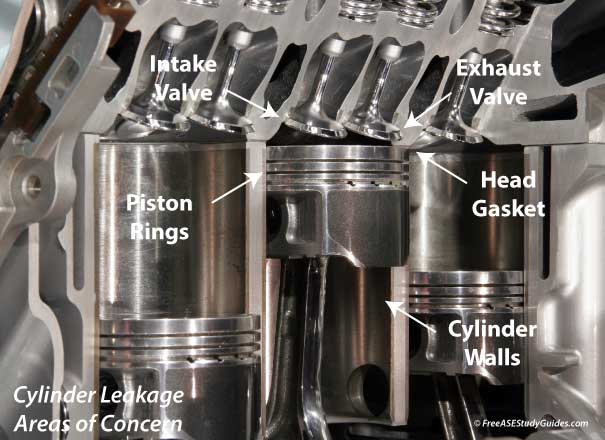
Oil burning in the combustion chamber results in blue-gray exhaust. There are several ways oil can enter the chamber. It enters the chamber past the valves and piston rings while the engine runs.
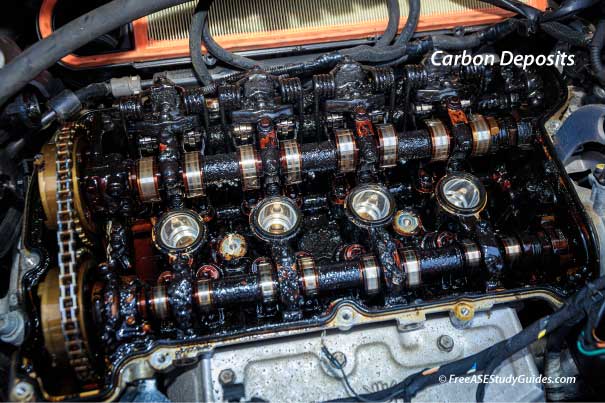
Unchanged engine oil can jel, causing problems like leaking valve seals. Leaky valve seals allow the oil on the cylinder head to seep into the cylinders overnight, resulting in blue-colored exhaust at startup in the morning.
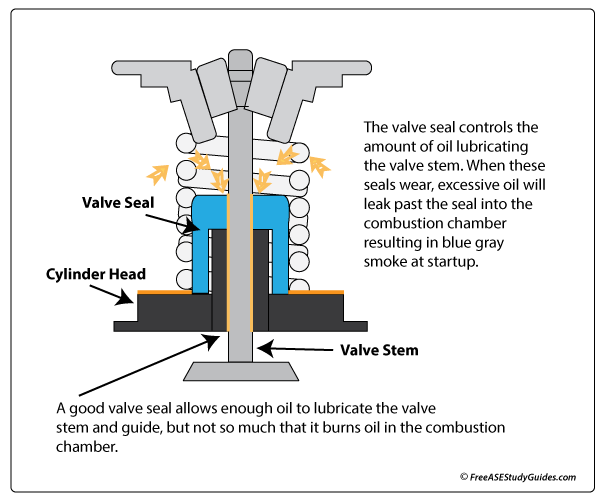
Depending on the severity, the exhaust smoke typically fades or disappears after the engine runs for a few minutes.
Exhaust Color
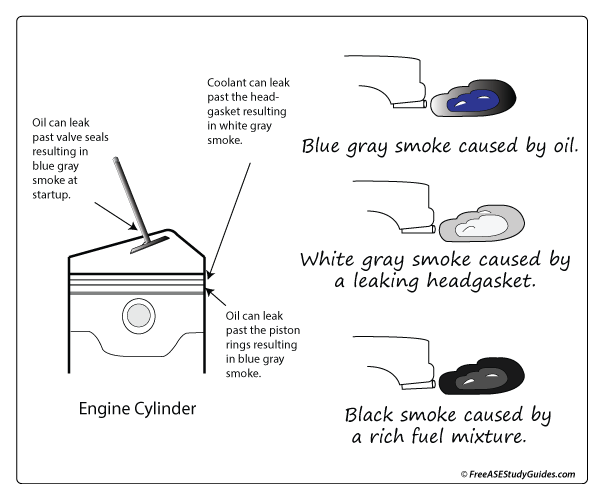
Faulty valves and worn piston rings also cause blue-colored exhaust. A clogged, faulty, or closed PVC valve results in excessive crankcase pressure forcing oil past the piston rings and into the chamber.
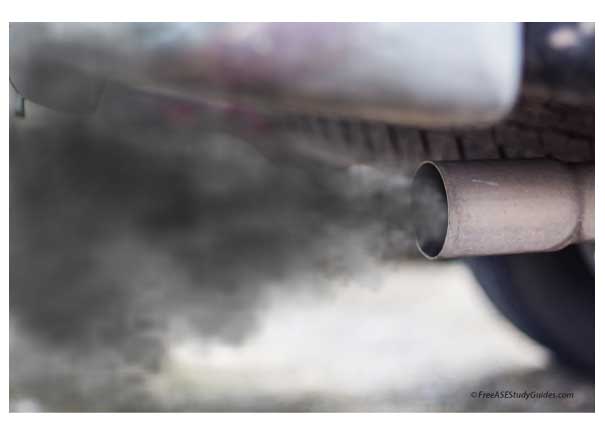
A rich fuel condition causes black-colored exhaust. Leaking fuel injectors or excessive fuel pressure result in a black-colored exhaust and a sooty tailpipe.
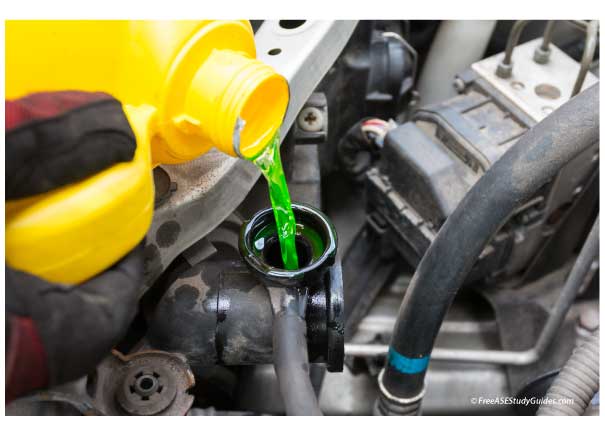
White-colored exhaust results from coolant burning in the combustion chamber. It is typically the result of a bad head gasket or warped cylinder head.
Wet Cylinder Compression Test
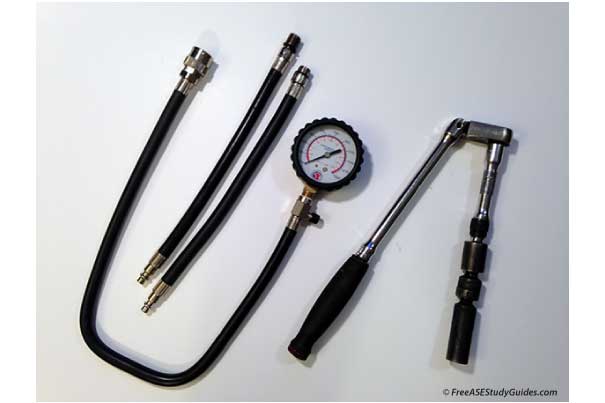
A wet cylinder compression test indicates if it is a valve or the piston rings causing the blue exhaust. After locating a cylinder below the specifications, the next step is to perform a wet compression test. This test indicates whether it is a bad valve, blown head gasket, or weak piston rings causing the smoke. Insert an ounce or two of oil into the suspect cylinder. Rotate the crankshaft for five or six turns, and record the new compression readings.
In a Nutshell
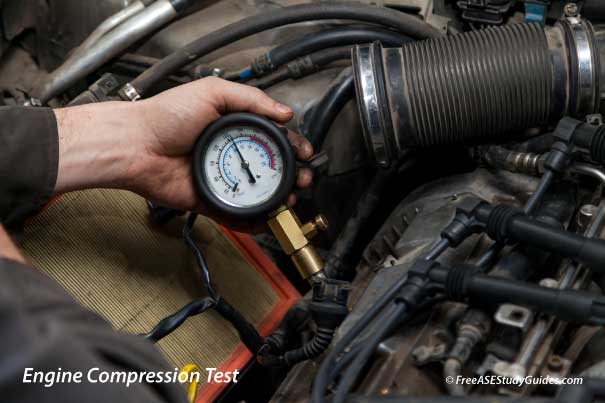
- Bad Valve(s): If the compression reading remains the same, suspect a faulty valve, most likely an exhaust valve.
- Worn Rings: If the compression increases suspect worn piston rings; the oil inserted into the cylinder has filled the gap caused by the worn rings/cylinder walls.
- Blown Head Gasket: If two adjacent cylinders have low readings suspect a faulty head gasket.
Leak Down Test
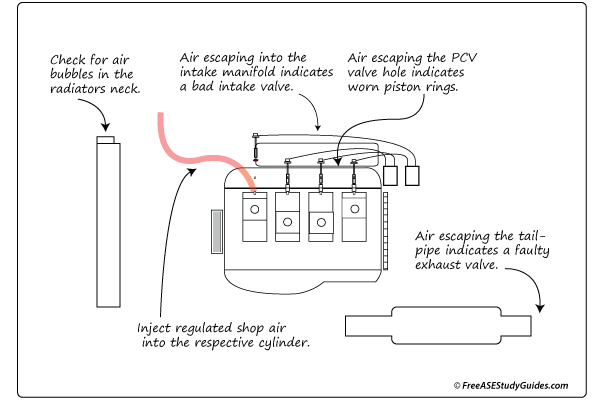
A leak-down test indicates if it is an exhaust valve or an intake valve. Insert regulated air pressure into the cylinder. If air is hissing from the tailpipe, there is a bad seal between the exhaust valve and the valve seat. If air is hissing from the intake manifold, there is a bad seal between the intake valve and its seat. If bubbles are surfacing in the radiator neck, suspect a faulty head gasket. If air is hissing from the PCV system, suspect weak piston rings.